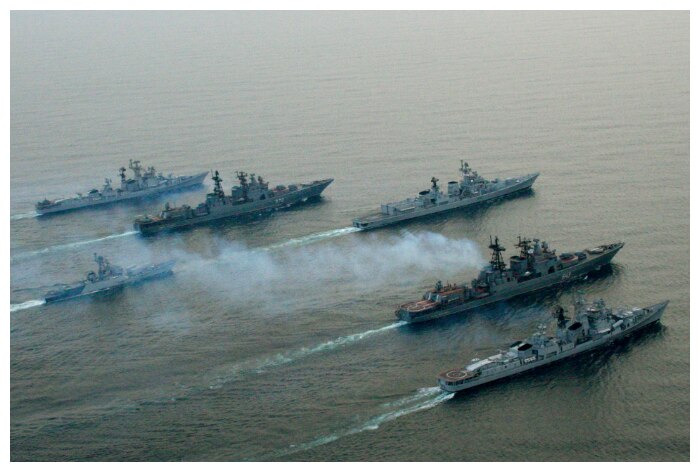India views Russia as a time-tested Cold War-era ally with important cooperation in defence, oil, nuclear energy and space research.
New Delhi: Prime Minister Narendra Modi’s visit to Washington in June is expected to reduce India’s dependence on Moscow for arms, economic ties and technology, as New Delhi and Washington seek to strengthen the Quad partnership, which also includes Japan and Australia, to contain growing aggression from China.
India views Russia as a time-tested Cold War-era ally with important cooperation in defence, oil, nuclear energy and space research. But the partnership has become complicated as Moscow builds closer ties with India’s main rival, China, partly because of the war against Ukraine.
Here it is with the ties between India and Russia.
HOW DID INDIA DEVELOP TIES WITH RUSSIA?
India began to build a strong relationship with the then Soviet Union in the mid-1950s during the Cold War and then strengthened those ties due to conflicts with Pakistan.
The Soviet Union helped broker a ceasefire between India and Pakistan to end the 1965 war over control of the disputed territory of Kashmir in the Himalayas. Then, during India’s war with Pakistan in December 1971, the Soviet Union used its veto power to support India at the United Nations, while the US ordered a task force to enter the Bay of Bengal in support of Pakistan.
India and the Soviet Union signed a treaty of peace, friendship and cooperation in August 1971. After the dissolution of the Soviet Union, it was replaced in January 1993 by the Treaty of Indo-Russian Friendship and Cooperation.
WHAT IS INDIA’S POSITION ON RUSSIA’S WAR AGAINST UKRAINE?
India has so far avoided voting against Russia or criticizing Russian President Vladimir Putin since its invasion of Ukraine in February 2022.
Under pressure from the United States and European countries, Prime Minister Narendra Modi told Putin in September, “The current era is not an era of war.” He said democracy, diplomacy and dialogue had held the world together.
Modi and Putin met in September on the sidelines of a meeting of the Shanghai Cooperation Organization summit in the city of Samarkand, Uzbekistan.
IS INDIA DEPENDENT ON RUSSIAN WEAPONS?
India started looking for Soviet weapons after the bloody war with China in 1962.
In the early 1990s, the USSR accounted for about 70% of Indian Army weapons, 80% of Air Force systems, and 85% of Naval platforms.
India purchased its first aircraft carrier, INS Vikramaditya, from Russia in 2004. The aircraft carrier had served in the former Soviet Union and later in the Russian Navy.
The Indian Air Force currently operates over 410 Soviet and Russian fighters comprising a mix of imported and license built platforms. India’s inventory of Russian-made military equipment also includes submarines, tanks, helicopters, submarines, frigates and missiles.
India has reduced its reliance on Russian weapons and diversified its defense purchases by buying more from countries like the US, Israel, France and Italy. But experts say it could take 20 years to overcome its dependence on Russian supplies and spare parts.
HOW MUCH RUSSIAN OIL DOES INDIA BUY?
After Russia invaded Ukraine, the United States and European countries set a $60 per barrel cap on Russian oil to contain Moscow’s rising revenues. India’s oil purchases from Russia have surged despite the sanctions.
Indian officials defended buying oil from Russia, saying the lower price benefits Indian consumers.
Russian oil now accounts for nearly 20% of India’s annual crude oil imports, up from just 2% in 2021, according to Indian media reports.
Josep Borrell, the European Union’s foreign policy chief, recently suggested that the EU should take tougher action against India reselling Russian oil as a refined fuel to Europe. India says it understands EU regulations that Russian crude, if substantially converted in a third country, will no longer be treated as Russian.
HOW ARE INDIA’S TIES WITH THE US AND EUROPE?
India, with the world’s second-largest army, fourth-largest air force and eighth-largest navy, is trying to develop into a center of defense manufacturing. But it lacks a strong industrial base for military equipment.
India is acquiring new technologies and reducing dependence on imports.
Under the administration of Donald Trump, the US and India signed defense deals worth more than $3 billion. Bilateral defense trade increased from nearly zero in 2008 to $15 billion in 2019, including maritime patrol aircraft, long-range missiles and drones.
US Defense Secretary Lloyd Austin discussed the upgrade of the partnership with India during his visit to New Delhi in early June.
Joint production and production of fighter engines, infantry fighting vehicles, howitzers and their precision munitions were discussed in May at a meeting of the US-India Defense Policy Group in Washington, and a decision is likely to be announced during Modi’s visit to Washington.


